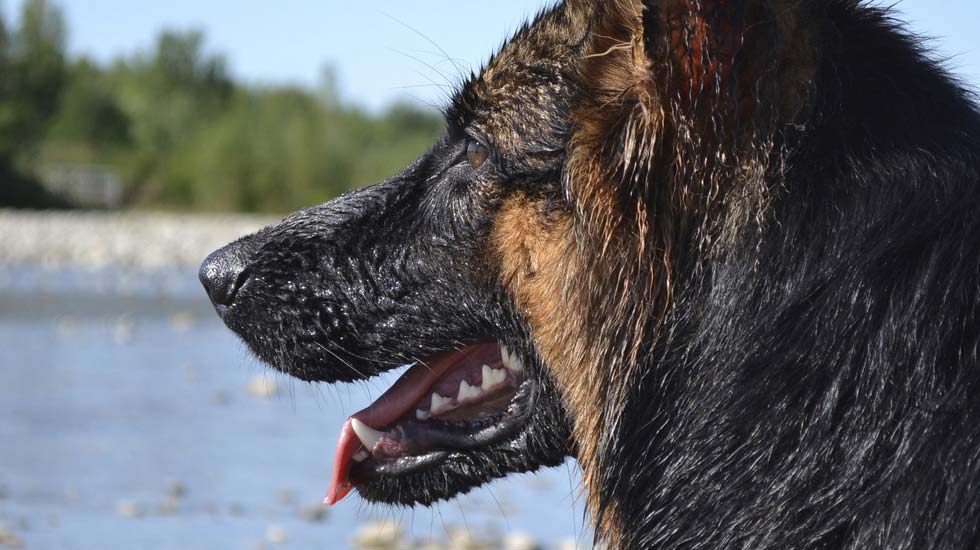Your dog is entirely dependent on your choices for their future. After you recover from the initial shock and sadness of the diagnosis, it is essential to confront this challenge. This cancer can be aggressive and if left untreated, has a high mortality rate. Most dogs are not feeling particularly sick at the time of diagnosis. So it may be tempting to "hold off" on treatment to see if the pet gets worse. This is not a good idea. Waiting can drastically reduce the chances for long term survival. Better remission rates are achieved if your pet is treated in the early stage, while they still feel healthy. If you notice fast growing lumps on your dog that seem to be in the area of the major joints (at the neck, in front of the shoulders, in the armpits, at the back of the knees or in the groin) have your dog examined ASAP by a veterinarian, even if he or she appears healthy.
Remember dogs that still feel well and are still strong because they are only in the early stage of the disease will do better with their treatments, than those who have more advanced disease. Lymphosarcoma can occur in the lymph nodes, spleen, liver, and other organs, which makes it very serious and untreated dogs generally deteriorate rapidly. But with treatment and careful attention to your pet's overall health there is a good chance to defeat this terrible disease.
Oral prednisone therapy may be prescribed to reduce swelling and discomfort, but is symptomatic treatment only, and probably will not appreciably extend life span.
Chemotherapy is usually considered a good option, depending on how extensive the cancer is, whether it has spread to other areas of the body, and if so, which major organs or systems are involved, although it can be very harsh, dogs tend to tolerate chemotherapy well. When a dog tolerates chemotherapy well their quality of life can be quite good, even during the treatment period. When this cancer affects young to middle-aged dogs that are healthy in other respects they are seen as good candidates for aggressive chemotherapy. For dogs that receive today's chemotherapy protocols, life expectancy can extend quite a bit.
The treatment methods that have been developed over the last century or so are chemotherapy, radiation and surgery. These methods are used to reduce the tumors, but should always be seen as only one arm of a multi-pronged approach. The reduction in tumor mass, or another way to say that is the reduction of the aberrant cells which are present, is most certainly a vital part of any treatment protocol. But these methods alone do not cure cancer. Only triggering the dog's normal immune recognition response can allow the dog to overcome the cancer.
This is why we recommend immune enhancement to go along with any other treatment. Even after surgery or radiation or chemotherapy the underlying cause of the cancer is still there, which is the immune dysfunction that allowed the cancer to form in the first place. Chemo and surgery do not deal with this underlying immune dysfunction. However, when chemo and surgery are used along with immune modulation therapy, the chances of a dog overcoming lymphoma and surviving a normal life span are excellent.
Until and unless the immune recognition response is triggered, the patient cannot overcome the cancer and recover fully.
Ultimately, only the patient's own immune system can overcome the cancer.
Modern research into immune modulation therapy as an adjunct to conventional therapy has proven this concept. Immune modulation therapy is at the forefront in treating human cancers worldwide, although naturally occurring compounds are not usually recognized as drugs in America, so it is catching on slower here than in most other countries.

 Summer Paw Pad Injuries & Paw Pad Care for Dogs
Summer Paw Pad Injuries & Paw Pad Care for Do
Summer Paw Pad Injuries & Paw Pad Care for Dogs
Summer Paw Pad Injuries & Paw Pad Care for Do
 Easing a Dog’s Passing
Weighing the Decision to Euthanize
Easing a Dog’s Passing
Weighing the Decision to Euthanize
 Dangerous Conditions: How Heat and Humidity Affect Your Dog
Dangerous Conditions: How Heat and Humidity A
Dangerous Conditions: How Heat and Humidity Affect Your Dog
Dangerous Conditions: How Heat and Humidity A
 Natural Treatments for Your Car
Car-Sick Canine: Holistic Remedies
Natural Treatments for Your Car
Car-Sick Canine: Holistic Remedies
 Dogs and Mental Health - What You Need to Know
Dogs and Mental Health - What You Need to Kno
Dogs and Mental Health - What You Need to Know
Dogs and Mental Health - What You Need to Kno